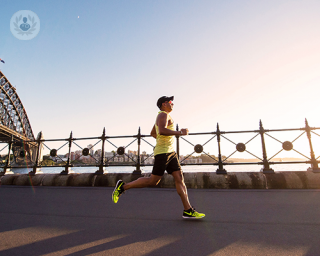Prosthetic Parts
What is an artificial limb?
An artificial limb, or prosthesis is any artificial device which replaces a body part that is missing following amputation or due to a condition present at birth. There are many different types of artificial limb, usually named after the body part being replaced:
- Transtibial or “below the knee” –replaces the lower leg
- Transfemoral or “above the knee” – replaces both the lower and upper leg
- Transfarial or “below the elbow” – replaces the forearm
- Transhumeral or “above the elbow” – replaces both the lower and upper arm
Less common types of artificial limb include prosthetic hands and prosthetic feet.
Prosthetic arms and legs are generally made from a strong but lightweight material such as carbon fibre. They are custom fitted to the patient, because it is important that the socket (the part which attaches to the body) fits precisely to prevent skin or tissue damage.
Some artificial limbs come with a control system. These can include:
- mechanical systems – commonly found on prosthetic hands, involving cables attached to the opposite shoulder. When pulled the artificial hand closes.
- myoelectric systems – a much more modern system, where muscular impulses in the body are sensed and amplified to power electric motors in the artificial limb that operate its movements.

What does fitting an artificial limb involve?
Fitting an artificial limb is a complex process which is part of a wider program of rehabilitation after an amputation.
The process starts a few weeks after the amputation, once the site of the amputation has settled. By measuring the healthy opposite limb, a mould can be made which will form the basis of the artificial limb. At this stage, you might be fitted with a temporary artificial limb to help you get used to using one, while a more permanent artificial limb is being made.
To prepare for the prosthetic limb, you will be taught a set of exercises to strengthen the remaining limb, and the skin might need to be made less sensitive.
You will generally have a choice over the kind of artificial limb you have. Generally, artificial limbs can be made to be functional or cosmetic, but very rarely both at the same time. Even among functional artificial limbs there is a wide variety to choose from, because each model excels at a different kind of task. The right model for you will depend on how much physical activity you do and what activities are important to you.
An artificial limb generally lasts around three years in an adult and six months in a child; after this it is usually necessary to fit a new one because your body changes shape all the time.
Alternative treatments
Not everyone will be physically suitable for the extensive rehabilitation and physiotherapy involved in fitting and getting used to an artificial limb. Instead a purely cosmetic artificial limb may be recommended, one which looks more like a real limb but does not provide any functionality (e.g. assistance with walking). In other cases, the use of mobility aids like a wheelchair might be more useful.

